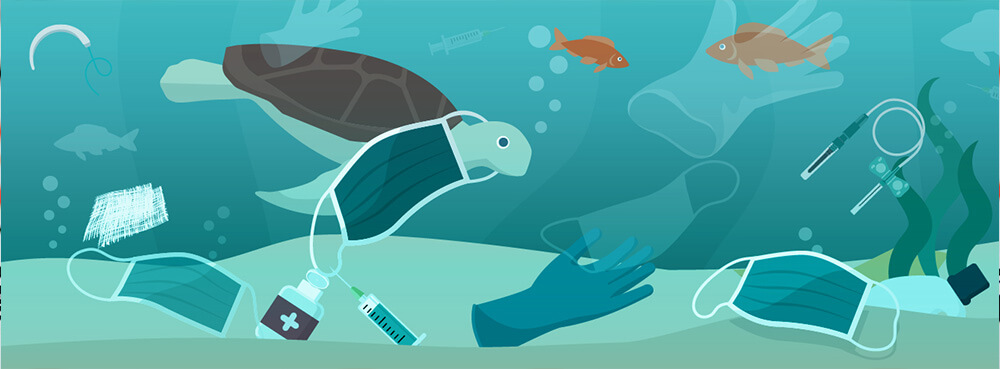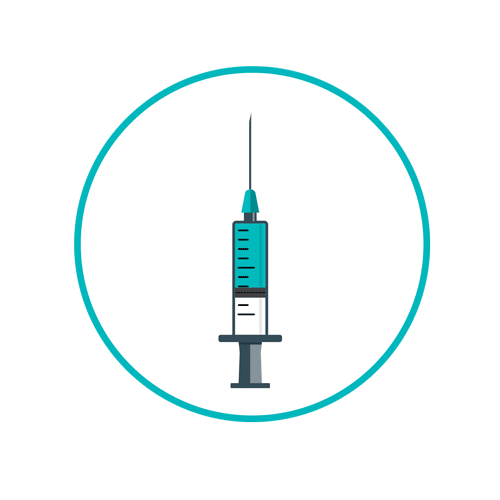Negative Effects of Biomedical Waste on the Environment

The threats caused by improper disposal of biomedical waste not only affect humans, but household pets, regional wildlife, and the environment. Every healthcare facility within Canadian borders should have adequate processes in place for healthcare employees to properly segregate biomedical waste from other waste streams at their point of origin. Biomedical waste management processes not only help protect humans, but the environment.
IN THIS BLOG:
1 / The definition of biomedical waste
2 / Biomedical waste and the environment
4 / Daniels promotes a clean environment
Defining Biomedical Waste
When looking up the definition for biomedical waste in many provinces throughout Canada, healthcare waste generators may come across different wording, some of it rather vague. For example, the Environmental Management Act, Part I (Introductory Provisions) defines biomedical waste as “having the prescribed meaning”. So what does that mean?
In the province of Alberta, biomedical waste implies a waste that is generated by:
- Human healthcare facilities
- Medical research and teaching establishments
- Clinical testing or research laboratories; and
-
Facilities involved in the production or testing of vaccines
So what exactly is biomedical waste? How does governmental and provincial agency oversight define biological waste from other waste streams in regard to proper segregation, handling, storage, transportation and ultimate disposal?
Basically, biomedical waste is separated into categories that include:
- Infectious waste
- Trace cytotoxic waste
- Sharps
- Blood products
- Any waste that has been contaminated or is suspected of being contaminated by possibly infectious human bodily fluids such as blood or blood components
- Pathological waste
-
Carcasses (animal)
Laws applicable to biohazardous waste generators also apply. Standards of the federal government as well as provincial and municipal governments should be followed to reduce the risk of injury to healthcare employees and to the environment. Biomedical and hazardous waste terms are often used interchangeably.
Biomedical waste is often produced by hospitals, outpatient medical centres, surgical clinics, dentists, and even veterinary services. Awareness is key to minimise contamination when dealing with healthcare waste, so basic principles of waste management programs must be followed.
Biomedical Waste and the Environment
All biomedical waste has the potential to endanger human health as well as cause damage to the environment. The most common types of potentially infectious biomedical waste includes sharps waste, pharmaceutical/chemical waste, cytotoxic waste, and body part waste.
Biomedical waste is not considered hazardous. Hazardous waste is most commonly identified if it has certain characteristics: generally toxic, contains hazardous or toxic chemicals, is radioactive, or it contains sharps. Risks to human health when dealing with biomedical and hazardous waste include sharps-inflicted injuries, poisoning, and pollution caused by the release of pharmaceutical or chemical products such as antibiotics and/or cytotoxic drugs. Some specifics:
- Pollution through wastewater is a danger, as is the release of dangerous emissions during incineration.
- Groundwater contamination and polluted streams and river ways causes unique dangers and damage to aquatic life, wildlife, and agricultural irrigation systems.
- Improper disposal of biomedical waste that ends up in landfills has the potential to transfer to stray animals, rodents, and birds that can then spread parasites and bacterial infections through animal populations.
- Air pollutants generated by on-site or off-site incineration where emission standards are not maintained has the potential to contaminate and spread potentially dangerous airborne particles that affect not only those diagnosed with lung or breathing issues, but all life.
-
If not properly contained and monitored, diagnostic technologies releasing radioactive particles into the air have the potential to travel long distances to other areas, disseminating air pollutants over large expanses of inhabited and uninhabited land that can cause illness and disease.
As such, improper disposal of biomedical waste can cause:
- Spread of HIV, hepatitis B, hepatitis C, and other viral illnesses
- Parasitic infections
- Tuberculosis
- Lung infections such as asthma, lung cancer, or chronic obstructive pulmonary disease (COPD)
- Skin infections
-
Cholera
Exposure to air pollution can cause a number of diseases, increased hospitalization, and premature death. The Canadian government has estimated approximately 15,000 premature deaths every year are linked to air pollution. The negative effect of air pollution on cardiovascular health can contribute to increased risk of heart attack or heart failure, hypertension, angina, and arrhythmia as well as possibility of stroke.
Water pollution spreads pathogenic microbes through contaminated water and can cause a number of waterborne illnesses including Giardiasis, leptospirosis, neural virus, salmonella, and more.
Maintaining Safety for People and the Environment
Every province within Canada must follow guidelines of the federal government when it comes to biomedical waste disposal. In addition, every province will have their own guidelines that must also be followed. In Alberta, sharps and any other solid biomedical waste that is destined for a landfill must be “rendered nonpathogenic by chemical or thermal on-site sterilization processes prior to landfill disposal.”
Review of guidelines for biomedical waste management in every province and municipality must be understood by healthcare waste generators in order to ensure proper segregation, transportation, and disposal methods and processes.
In the province of Ontario it is required that numerous types of biomedical waste be refrigerated at or below 4°C if it’s stored for more than four days, or at all times, depending on type (human anatomical waste, animal anatomical waste, human blood waste, and so forth). Properly colour-coded bags (red or yellow) and either anatomical symbols or universal biohazard symbols or cytotoxic symbols must be used appropriately.
Sharps waste is to be placed into single-use or reusable sharps containers that are puncture-proof and leak resistant. Sharps waste is to be placed in yellow containers and marked with the universal biohazard symbol, while cytotoxic sharps waste is to be marked with a red-coloured label and also a cytotoxic symbol.
Compliant management of biomedical waste – and all types of healthcare generated waste – means paying attention to the rules. Doing so ensures the protection of healthcare providers, patients, visitors in medical centres, as well as local environments. Daniels encourages health waste generators to review updates to environmental laws regarding the regulation of healthcare waste and disposal processes that include autoclaving, microwaving, steam treatment, chemical treatment, or incineration.
Daniels Promotes a Clean Environment
Daniels Health Canada is dedicated to not only providing products and resources for healthcare waste generators dealing with biomedical waste, but reducing the volume of all medical waste produced by hospitals, outpatient surgical centres, dental offices, and veterinary services. Reducing CO2 emissions, reducing the risk of sharps-related injuries and infections, and preserving Canada’s landscape and waterways are of vital importance. For more information about how Daniels Health Canada can support you in your efforts to maintain compliance and reduce the risk of biomedical waste dangers on your community and the environment, call us today.
